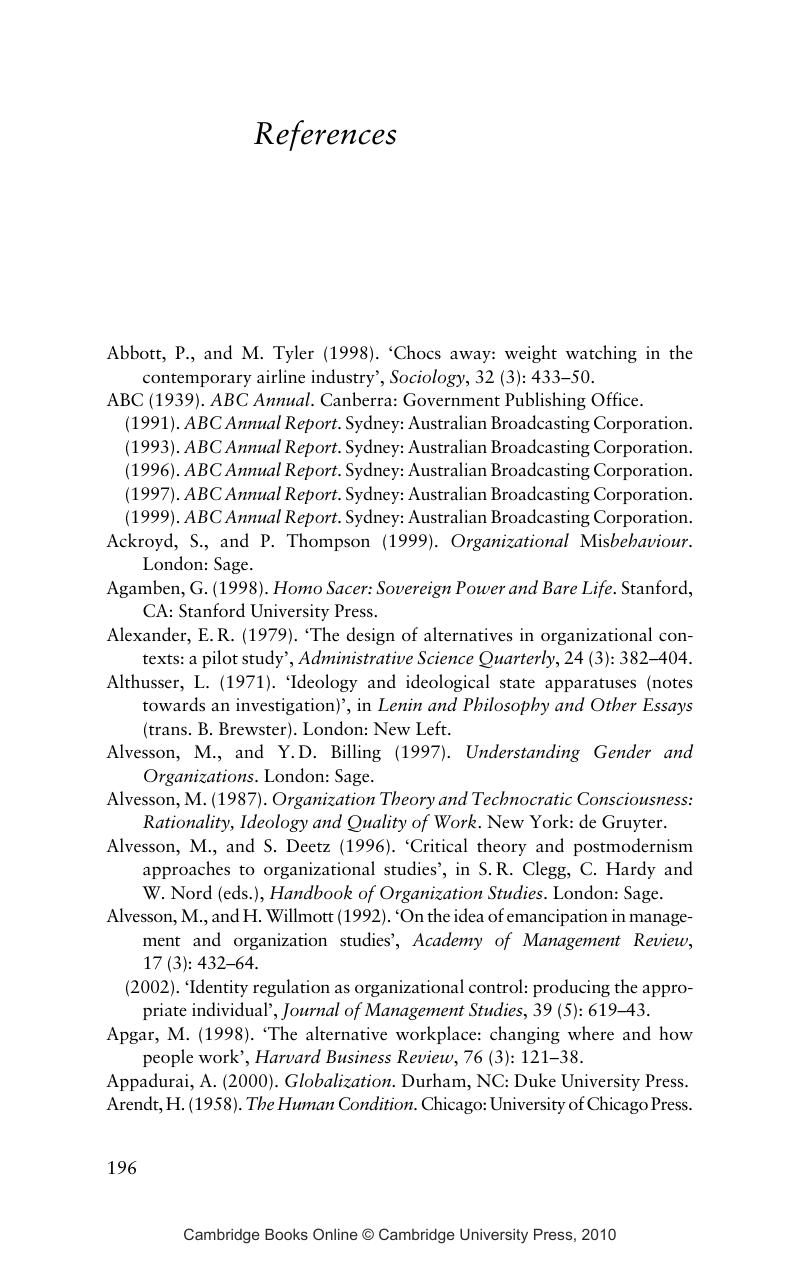References
Published online by Cambridge University Press: 13 January 2010
Summary

- Type
- Chapter
- Information
- Contesting the CorporationStruggle, Power and Resistance in Organizations, pp. 196 - 217Publisher: Cambridge University PressPrint publication year: 2007



